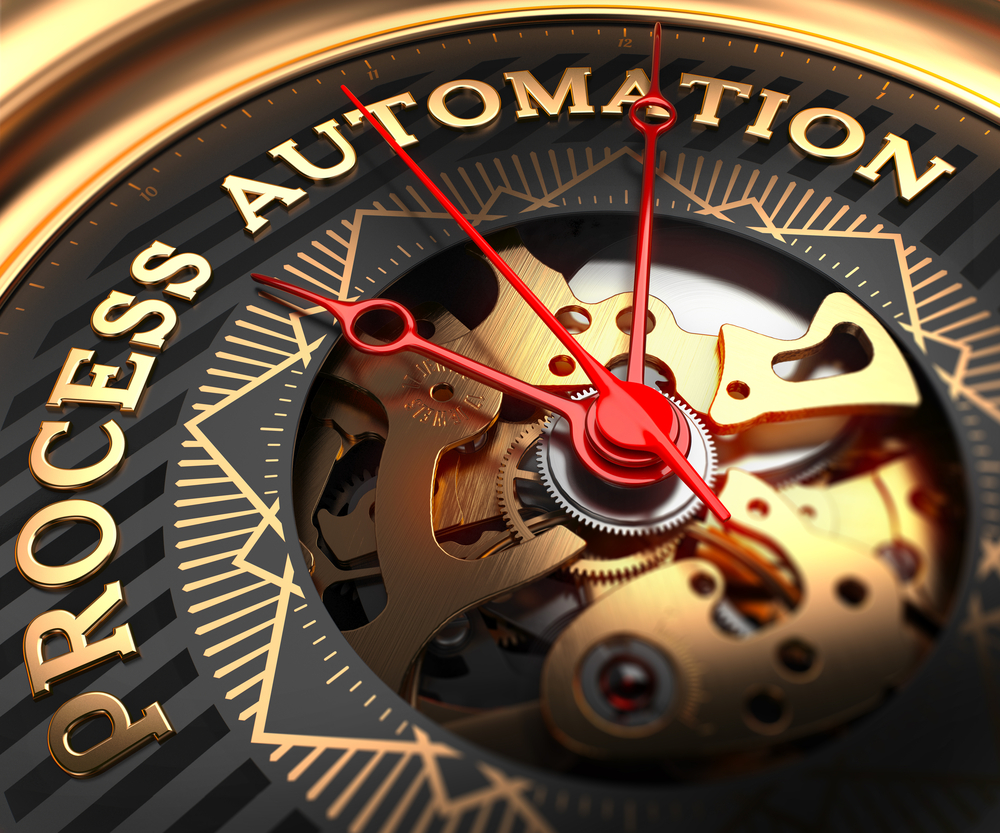The Environmental Impact of Going Paperless with Document Scanning
Table of contents
In the era of digital transformation, the concept of going paperless is gaining momentum across various industries. Particularly for architectural firms and construction companies, the shift towards digital documentation presents not only an opportunity to streamline operations but also a significant stride towards environmental sustainability. This article delves into the environmental benefits of adopting document scanning and transitioning to a paperless business model, underscoring its importance in today’s digital age.
The focus on architectural firms and construction companies highlights a sector where paper has traditionally played a central role. From blueprints to contracts, the reliance on physical documents has been a longstanding norm. However, as we move forward, the imperative to reduce this dependency becomes clear. The purpose of this exploration is to illuminate the environmental impact of paper usage and how document scanning can serve as a pivotal step towards a more sustainable and efficient future.
The Current Environmental Footprint of Paper Usage
The architectural and construction industries are among the most paper-intensive sectors in the global economy. With extensive use of plans, blueprints, contracts, and various other documents, these industries contribute significantly to the demand for paper. This section examines the environmental footprint of such extensive paper usage, shedding light on the production, utilization, and disposal phases, complemented by relevant statistics to underscore the urgency of shifting towards more sustainable practices.
The Extent of Paper Use
In architecture and construction, the reliance on paper-based documents is not just a matter of tradition but also of practicality. However, this reliance comes at a considerable environmental cost. The production of paper involves the harvesting of millions of trees annually, leading to deforestation and loss of biodiversity. Moreover, the paper production process is water and energy-intensive, contributing to higher carbon emissions and environmental degradation.
Environmental Impact
The environmental impact of paper usage extends beyond the initial production phase. The use and disposal of paper contribute to a cycle of waste that is increasingly challenging to manage. Statistics indicate that the paper and pulp industry is one of the largest consumers of water and one of the top emitters of greenhouse gases in the manufacturing sector. For instance, it is estimated that the average office worker uses approximately 10,000 sheets of copy paper each year, with a significant portion ending up in landfills. Furthermore, although paper is recyclable, recycling rates vary widely by region, and the process itself requires energy and water, thus adding to the environmental footprint.
Paper Consumption, Waste, and Recycling Rates
Globally, paper consumption continues to rise, with millions of tons of paper wasted each year. Despite increasing awareness and recycling efforts, a substantial amount of paper waste still ends up in landfills, contributing to methane emissions, a potent greenhouse gas. Recycling rates, while improving, are not yet at levels that significantly mitigate the environmental impact. For example, the recycling rate for paper in the United States stands at around 66%, a figure that reflects progress but also highlights the room for improvement.
This overview of the environmental footprint of paper usage in the architectural and construction industries sets the stage for exploring the benefits of document scanning and going paperless. By understanding the extent of the issue, firms can better appreciate the importance and impact of adopting more sustainable practices.
Understanding Document Scanning
Document scanning represents a pivotal technology in the transition to a paperless environment, especially for industries traditionally reliant on vast amounts of paperwork, such as architecture and construction. This process involves converting physical documents into digital formats, enabling businesses to store, manage, and access information more efficiently and sustainably. Here, we delve into the mechanics of document scanning, the types of documents it can transform, and the technology that makes it accessible for companies of all sizes.
How Document Scanning Works
Document scanning is a straightforward yet transformative process. It begins with the physical document being fed into a scanning device, which captures the document's image and converts it into a digital file. This file can then be stored on servers, cloud storage, or other digital archives. Advanced scanning solutions offer optical character recognition (OCR) technology, which converts text within scanned images into editable and searchable data. This functionality is particularly beneficial for industries dealing with intricate designs and detailed contracts.
Types of Documents That Can Be Digitized
In the context of architectural firms and construction companies, the scope for digitization is vast. Plans, blueprints, and contracts are prime candidates for scanning, given their central role in project planning and execution. Digitizing these documents not only reduces physical storage needs but also enhances data security and accessibility. Additionally, other documents such as invoices, purchase orders, and correspondence can be scanned, creating a comprehensive digital ecosystem that supports all facets of the business.
Technology Behind Document Scanning
The technology enabling document scanning has evolved significantly, making it more accessible and cost-effective for businesses. Modern scanners are capable of processing high volumes of documents quickly, with features that ensure high-quality digital reproductions. Cloud-based document management systems further streamline the process, offering scalable storage solutions and enabling remote access to documents. This technology integration facilitates a seamless transition from paper-based to digital workflows, making it easier for companies to adopt paperless practices.
Document scanning stands as a cornerstone in the journey towards environmental sustainability and operational efficiency for architectural firms and construction companies. By embracing this technology, these industries can mitigate their environmental impact, enhance productivity, and pave the way for a more sustainable future.
Environmental Benefits of Going Paperless
The shift towards a paperless environment, spearheaded by document scanning, offers a myriad of environmental benefits. This transition not only supports the global efforts to combat climate change but also contributes to the conservation of natural resources. By understanding the direct and indirect environmental advantages of reducing paper use, architectural firms and construction companies can recognize the broader impact of their move towards digital documentation.
Reduction in Tree Cutting and Deforestation
One of the most immediate benefits of going paperless is the significant reduction in the need for raw materials, primarily trees. The paper industry is a major driver of deforestation, with millions of trees harvested each year to meet the global demand for paper. By adopting document scanning, businesses can directly contribute to decreasing the rate of tree cutting, helping to preserve forests, biodiversity, and the habitats of countless species.
Lower Energy Consumption and Carbon Footprint
The production of paper is an energy-intensive process, contributing to high carbon emissions. Transitioning to a paperless system through document scanning significantly lowers energy consumption. Digital documents, once created, require no additional energy for reproduction, unlike their paper counterparts. This reduction in energy use translates into a smaller carbon footprint for businesses, aligning with global efforts to reduce greenhouse gas emissions.
Decreased Waste in Landfills
Paper waste constitutes a considerable portion of solid waste in landfills, where it decomposes and releases methane, a potent greenhouse gas. By minimizing paper usage, companies can significantly reduce their waste output. Document scanning eliminates the need for physical document storage, thereby decreasing the amount of paper disposed of and contributing to a reduction in landfill waste.
Conservation of Water Resources
The paper manufacturing process is not only energy-intensive but also water-intensive. It requires large volumes of water to produce a relatively small amount of paper. Going paperless through document scanning conserves water resources, contributing to the overall sustainability of business operations and the protection of global water supplies.
Case Studies and Examples
Several architectural firms and construction companies have already seen substantial environmental and operational benefits from going paperless. For instance, a case study might highlight a construction company that, by adopting document scanning and digital document management, reduced its paper use by 75% within a year, leading to significant cost savings and a notable reduction in its environmental footprint.
The environmental benefits of going paperless are clear and compelling. For architectural firms and construction companies, the transition not only supports global sustainability goals but also offers a path to more responsible and efficient business practices.
Additional Advantages for Architectural Firms and Construction Companies
Beyond the significant environmental benefits, transitioning to a paperless office through document scanning offers architectural firms and construction companies a range of operational and strategic advantages. These benefits not only enhance day-to-day workflows but also contribute to long-term business growth and sustainability. Let's explore how going paperless can streamline operations, improve efficiency, and bolster data security.
Streamlining Workflow and Increasing Efficiency
The adoption of a paperless system facilitates a more streamlined workflow, significantly increasing efficiency. Digital documents can be easily searched, accessed, and shared among team members, regardless of their location. This immediate access to information speeds up decision-making processes and enhances productivity. For architectural firms and construction companies, where project timelines and coordination are critical, the ability to quickly retrieve and share plans, blueprints, and contracts can have a substantial impact on project success.
Improving Data Security
Digital documents offer superior security features compared to physical documents. With advanced encryption and secure access controls, businesses can ensure that sensitive information, such as contracts and client details, is protected against unauthorized access. Moreover, digital documents can be backed up and recovered in the event of data loss, providing an additional layer of security against natural disasters or accidental destruction that physical documents cannot offer.
Facilitating Collaboration Across Projects
Document scanning and the subsequent use of digital files make it easier for teams to collaborate, regardless of geographical boundaries. Cloud-based document management systems enable multiple users to view, edit, and comment on documents simultaneously. This collaborative environment is particularly beneficial for architectural and construction projects, which often involve a diverse team of professionals working together to bring a project to fruition.
Long-term Cost Savings
While the initial investment in document scanning technology and services may seem significant, the long-term cost savings are substantial. Reducing paper use decreases the need for physical storage space, printing, and document disposal costs. Additionally, the efficiency gains from streamlined workflows can translate into lower operational costs and increased profitability.
For architectural firms and construction companies, the move to a paperless office is not just an environmental decision but a strategic business choice. The advantages of document scanning and digital document management extend well beyond sustainability, offering a pathway to improved operational efficiency, enhanced security, and significant cost savings.
Implementing a Paperless Strategy
Adopting a paperless strategy, anchored by document scanning, is a transformative step for architectural firms and construction companies aiming to enhance sustainability and operational efficiency. This transition requires careful planning and execution. Here, we outline a step-by-step guide to successfully implementing a paperless environment, focusing on the pivotal role of document scanning and the selection of a suitable service provider.
Step 1: Assess Current Document Processes
Begin by evaluating your current document management processes. Identify the types of documents that are routinely used and stored, such as plans, blueprints, contracts, and administrative paperwork. Understanding the scope and flow of your documents will help in determining the specific needs and challenges that document scanning must address.
Step 2: Choose the Right Document Scanning Service Provider
Selecting a competent document scanning service provider is crucial. Look for providers with experience in handling documents specific to the architectural and construction industries. Consider factors such as the quality of scanning, security measures, and the ability to index and organize digital documents for easy retrieval. Additionally, assess the provider's capacity to offer scalable solutions that can grow with your business.
Step 3: Prepare for the Transition
Preparing for the transition involves both logistical and cultural shifts within the company. Logistically, organize physical documents for scanning, prioritizing them based on their frequency of use and importance. Culturally, prepare your team for the change by highlighting the benefits of going paperless and providing training on new digital tools and processes.
Step 4: Integrate Digital Document Management Systems
With scanned documents ready, integrate them into a digital document management system (DMS). A robust DMS will serve as the backbone of your paperless office, offering features such as document indexing, search capabilities, and access controls. Ensure the system is user-friendly and accessible to all relevant team members, facilitating a smooth transition to digital workflows.
Step 5: Train Staff and Promote Adoption
Training is essential to ensure that all team members are comfortable with the new system and processes. Offer comprehensive training sessions on how to use the DMS, emphasizing the benefits of the paperless approach. Encourage feedback and be prepared to address any concerns or challenges that arise during the transition.
Step 6: Continuously Evaluate and Improve
Finally, adopting a paperless strategy is an ongoing process. Continuously evaluate the effectiveness of your paperless systems and processes, seeking opportunities for improvement. Stay updated on new technologies and practices that can further enhance efficiency and sustainability.
Implementing a paperless strategy through document scanning is a significant yet rewarding endeavor. It not only positions architectural firms and construction companies as leaders in sustainability but also drives operational efficiencies that can lead to long-term success.
Conclusion
The journey towards a paperless office is both a commitment to environmental sustainability and a strategic move towards operational efficiency. For architectural firms and construction companies, the adoption of document scanning and digital document management systems represents a pivotal step in this direction. This article has explored the environmental benefits, additional advantages, and practical steps necessary to make this transition successful.
By reducing paper consumption, these industries can significantly lower their environmental footprint, streamline their operations, and secure their data more effectively. The long-term benefits, including cost savings and enhanced collaboration, further underscore the value of going paperless.
As we move forward in the digital age, the shift towards paperless operations is not just a possibility but a necessity for businesses aiming to remain competitive and sustainable. We encourage firms to consider document scanning as a foundational step towards achieving their paperless goals.
Ready to embark on your paperless journey? Explore DocCapture’s document scanning services and discover how we can assist in achieving your sustainability and efficiency objectives. Don't wait any longer to transform your operations and make a positive environmental impact. Fill out our "get a quote" form on our website for more information and to contact DocCapture for a personalized consultation. Start your transition to a paperless office today and contribute to a more sustainable future.
Share this
You May Also Like
These Related Stories

Mitigating Risks in School Administration Through Document Management

Creating a Paperless Office: The First Steps

